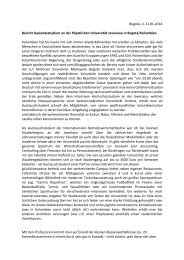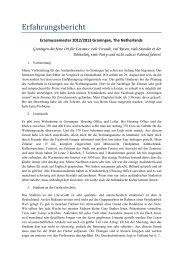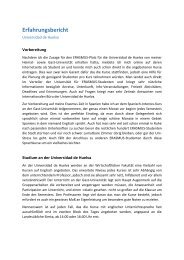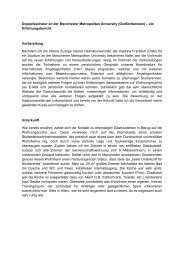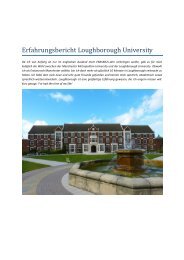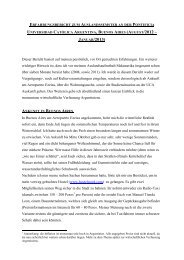Dariusz Aleksandrowicz Aleksandrowicz - Europa-Universität ...
Dariusz Aleksandrowicz Aleksandrowicz - Europa-Universität ...
Dariusz Aleksandrowicz Aleksandrowicz - Europa-Universität ...
Create successful ePaper yourself
Turn your PDF publications into a flip-book with our unique Google optimized e-Paper software.
D. <strong>Aleksandrowicz</strong>: The Socialist City and its Transformation 5<br />
“socialist people” into an active whole which had to play a special role within the<br />
ideologically determined ritual.<br />
Besides the political centre, another dominant factor of a socialist city was the production<br />
plant. Many new socialist cities have been built for the staff of a single large<br />
production plant or for a single branch of heavy industry. 8 The role the production<br />
plant played in the life of a socialist city went far beyond the process of production<br />
and of work. Because of the permanent supply shortages, the plant provided the supply<br />
of commodities for the members of its staff. 9 It also provided cultural life for<br />
them and kindergarten for their children. Holidays were organized by the production<br />
plant in the plant-owned “recreation settlements.” Despite the fact that these settlements<br />
were geographically distant from both socialist city and socialist production<br />
plant they belonged to the very same context and were thus an extension of the behavioural<br />
and cultural patterns determined by it.<br />
The new socialist city essentially consisted of (1) the centre of political and ideological<br />
manipulation, (2) the place of production and of work, and (3) the private<br />
dwelling-place. In each of these specific spaces the individual was dominated by<br />
political manipulation (which was daily present at least in form of visual propaganda<br />
and of monumental architecture of the central square or of the official buildings),<br />
by the plant, and by the anonymity and monotony of the living blocks. As a<br />
result of an extremely poor infrastructure of the urban-specific services (including<br />
cultural services) there existed hardly any mediating instances between the individual<br />
space, which was reduced to the inside of the dwelling-place, and the public<br />
space of the city, which was the spatial representation of the authority of the socialist<br />
state. This type of relation between the individual and the collective (or:<br />
between the private and the public) was, to be sure, also an essential issue in the<br />
above mentioned ideas of the Western socialist city planers. In Garnier’s design of<br />
the cité industrielle, for instance, “it is only the threshold of one’s own house which<br />
(...) marks the very narrow border between the privacy of living and the public<br />
space. Crossing the threshold one already finds himself outside, in a space that belongs<br />
to everyone.” (de Bruyn, 1992: 537). In the actual socialist city the problem,<br />
however, was that this space which was originally designed so as to belong to eve-<br />
8 The process of construction and of existence of a socialist city in its function as a dwelling place<br />
of one single production plant is impressively documented in Beier (1997). (The central issue of<br />
the volume is, however, to demonstrate similarities between a planned city in East and in West<br />
Germany: Stalinstadt/Eisenhüttenstadt and Stadt des KdF-Wagens/Wolfsburg. I do not deal with<br />
the related questions in this paper, because it would imply an detailed discussion of some other<br />
complex problems. One of them would be the relation between the respective aspects of the two<br />
totalitarian systems: Communism and National Socialism. It is due to the fact that Wolfsburg<br />
owes its very character as a “planned city” to its origin in the industrializing and city-planning<br />
concepts of the Nazi state.)<br />
9 From the end of the 70‘s onwards, when the crisis of the socialist economy consequently approximated<br />
its peak, some of the industrial production plants in socialist Poland even started<br />
breeding pigs in order to improve their respective services. These initiatives were glorified by the<br />
media and supported by the officials of party and state.



